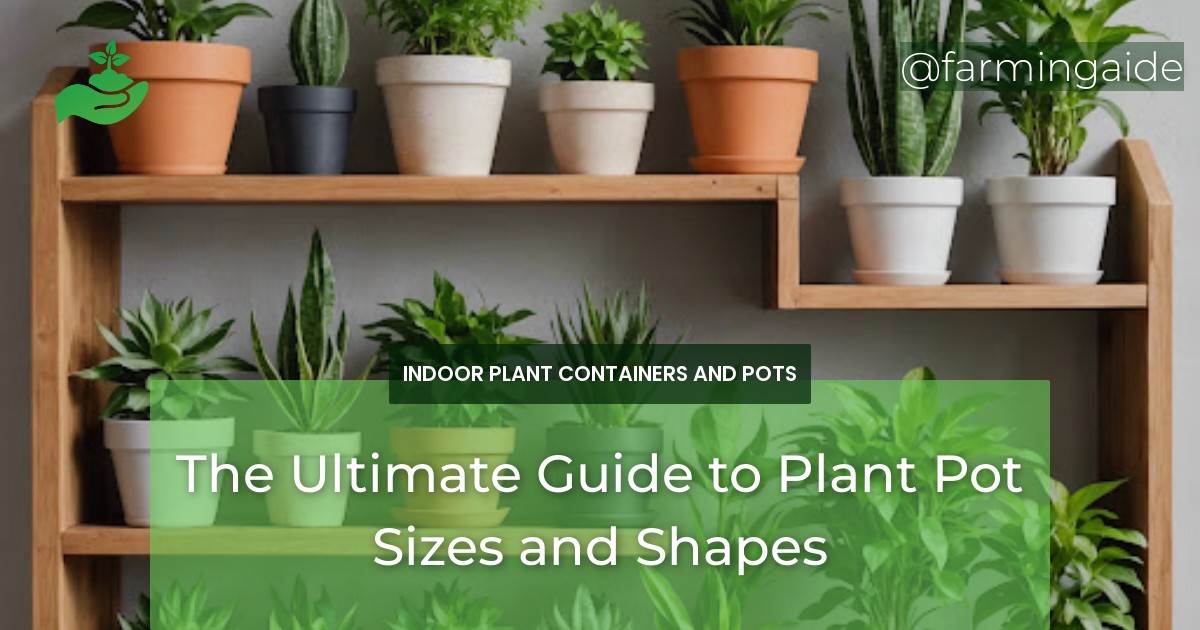When it comes to choosing the perfect plant pot, many of us are left feeling overwhelmed by the vast array of options available. From tiny terracotta pots to large, ornate planters, the choices seem endless. But what makes a plant pot truly perfect for your plant? Is it the size, the shape, the material, or something else entirely? In this comprehensive guide, we’ll delve into the world of plant pots, exploring the key factors to consider when selecting the ideal pot for your beloved plants.
Key Takeaways
- The right plant pot size and shape can greatly impact plant growth and health.
- Different plant pot materials have unique benefits and drawbacks.
- Decorative pots can add aesthetic appeal, while functional pots prioritize plant care.
- Seasonal considerations, such as winter care and summer heat, should be taken into account.
- By understanding plant pot sizes, shapes, and materials, you can create the perfect environment for your plants to thrive.
Understanding Plant Pot Sizes
When selecting a plant pot, one of the most critical factors to consider is the size. A pot that is too small can restrict root growth, while one that is too large can lead to excessive water retention. But what constitutes the perfect pot size for your plant?
Standard Pot Sizes for Common Plants
While there is no one-size-fits-all approach to plant pot sizes, there are some general guidelines to keep in mind. For example:
| Plant Type | Recommended Pot Size |
|---|---|
| Herbs (basil, mint, etc.) | 6-8 inches deep, 8-10 inches wide |
| Small succulents | 4-6 inches deep, 6-8 inches wide |
| Medium-sized plants ( peace lily, spider plant) | 8-10 inches deep, 10-12 inches wide |
| Large plants (fern, palm) | 12-14 inches deep, 14-16 inches wide |
How to Choose the Right Pot Size
When determining the ideal pot size for your plant, consider the following factors:
1. Plant variety: Different plants have unique growing habits and requirements. Research the specific needs of your plant to determine the optimal pot size.
2. Soil depth: Ensure the pot is deep enough to accommodate the plant’s root system.
3. Watering habits: If you tend to overwater, opt for a slightly smaller pot to prevent waterlogged soil.
Exploring Plant Pot Shapes
Beyond size, the shape of a plant pot can also impact plant growth and health. But what makes a particular shape more beneficial than another?
ALSO READ
Common Shapes and Their Uses
Plant pots come in a variety of shapes, each with its own unique benefits:
| Shape | Benefits |
|---|---|
| Round | Encourages even root growth, suitable for plants with sprawling roots. |
| Square | Provides more planting space, ideal for plants with shallow roots. |
| Rectangular | Accommodates plants with longer roots, such as ferns and peace lilies. |
How Pot Shape Affects Plant Growth
The shape of a plant pot can influence root development, soil moisture, and even the overall aesthetic of your plant display. For example:
Round pots promote even root growth, making them suitable for plants with sprawling roots.
Square pots provide more planting space, making them ideal for plants with shallow roots.
Material Matters in Plant Pots
Beyond size and shape, the material of a plant pot can greatly impact plant health and growth. But what are the benefits and drawbacks of different materials?
ALSO READ
Pros and Cons of Different Pot Materials
From ceramic to plastic, each material has its unique advantages and disadvantages:
| Material | Pros | Cons |
|---|---|---|
| Ceramic | Durable, aesthetically pleasing | Heavy, prone to cracking |
| Plastic | Lightweight, affordable | May degrade over time, less aesthetically pleasing |
| Terracotta | Breathable, natural look | Fragile, prone to weathering |
How Material Affects Plant Health
The material of a plant pot can impact soil moisture, temperature, and overall plant health. For example:
Ceramic pots retain moisture, making them suitable for plants that thrive in humid environments.
Plastic pots may degrade over time, potentially leaching chemicals into the soil.
Decorative vs. Functional Pots
When choosing a plant pot, you may be torn between decorative and functional options. But what’s the difference, and which is right for you?
Choosing Pots for Aesthetic Appeal
Decorative pots prioritize style and design, often featuring intricate patterns, bright colors, and unique shapes. Consider:
1. Personal taste: Choose a pot that reflects your personal style and decor.
2. Room decor: Select a pot that complements the surrounding decor.
Selecting Pots for Optimal Plant Care
Functional pots, on the other hand, prioritize plant care and health. Consider:
1. Drainage: Opt for pots with built-in drainage holes to prevent waterlogged soil.
2. Material: Select materials that promote healthy soil conditions and plant growth.
Seasonal Considerations for Plant Pots
As the seasons change, your plant pots require special care to ensure your plants thrive.
Winter Care for Pots
During the winter months:
1. Insulate pots to prevent frost damage.
2. Reduce watering to prevent root rot.
Summer Heat and Pot Durability
During the summer months:
1. Choose pots with built-in UV protection to prevent material degradation.
2. Monitor soil moisture to prevent drying out.
Conclusion: Finding the Perfect Pot for Your Plant
In conclusion, selecting the perfect plant pot is a delicate balance of size, shape, material, and aesthetic appeal. By considering the unique needs of your plant, you can create a thriving environment that promotes healthy growth and beauty. Remember to choose a pot that not only complements your decor but also prioritizes your plant’s well-being. With this comprehensive guide, you’re one step closer to becoming a master plant parent!


